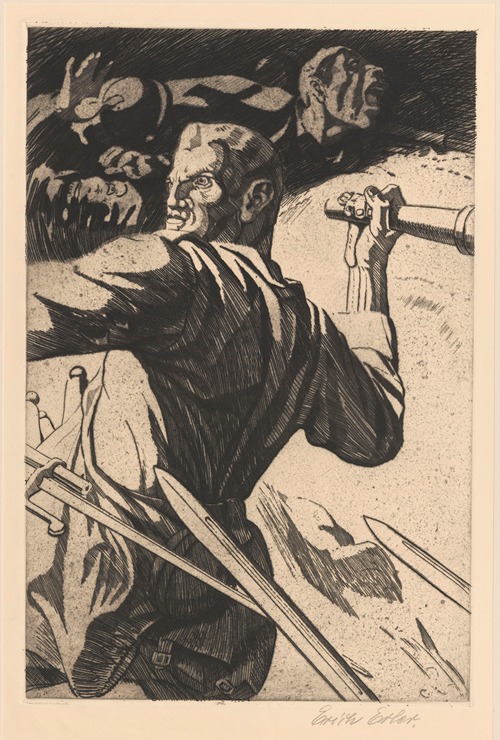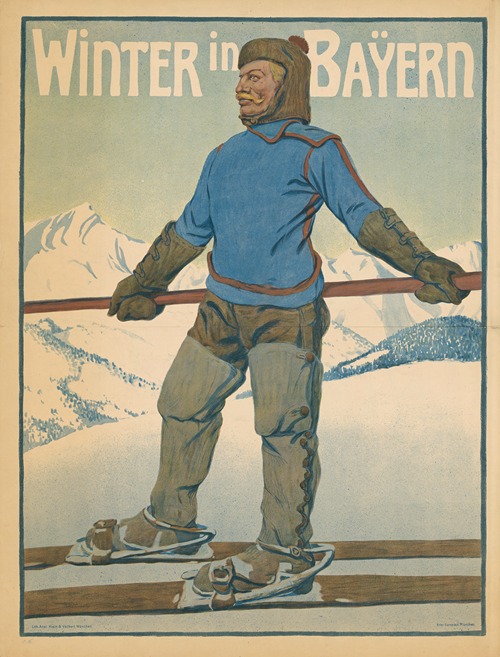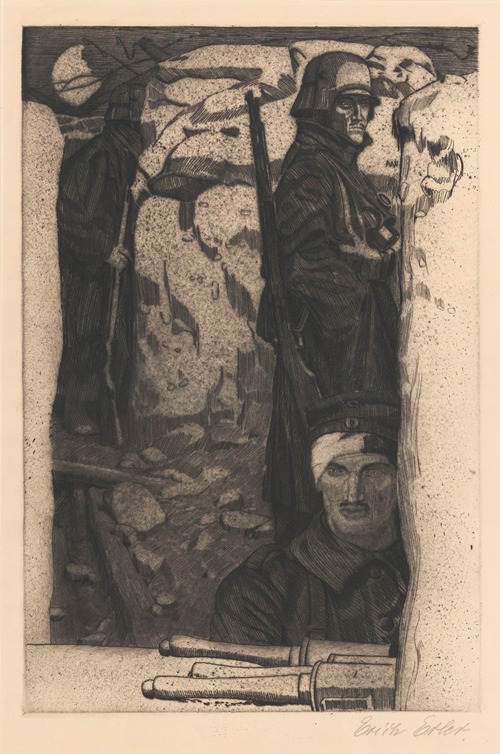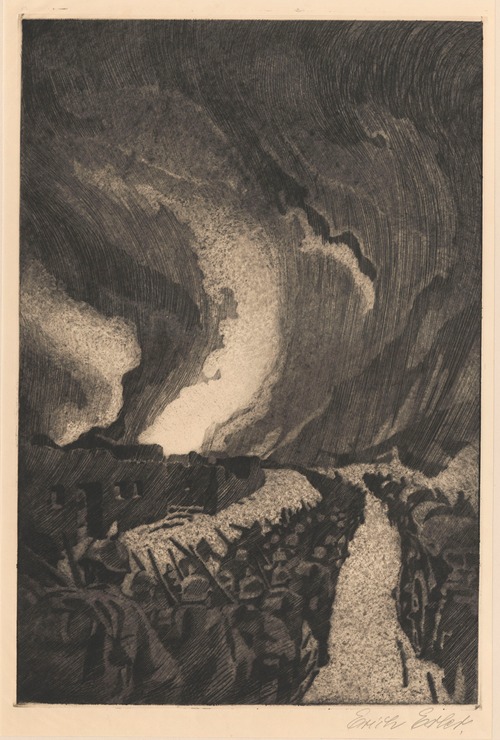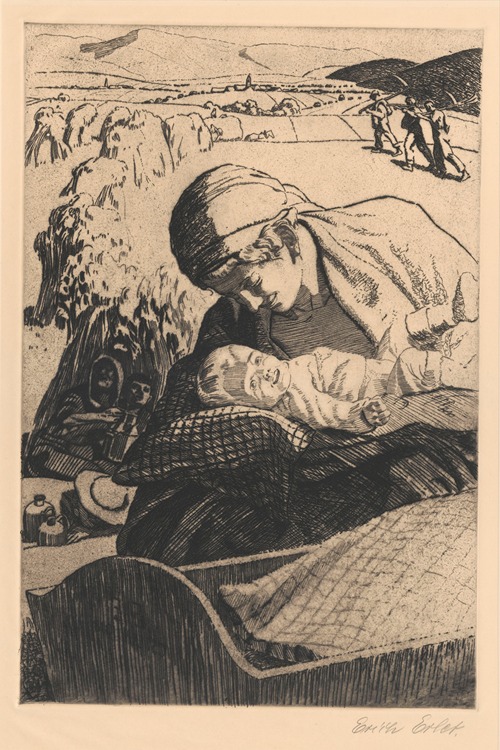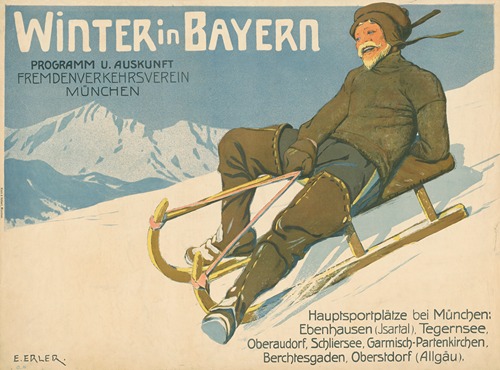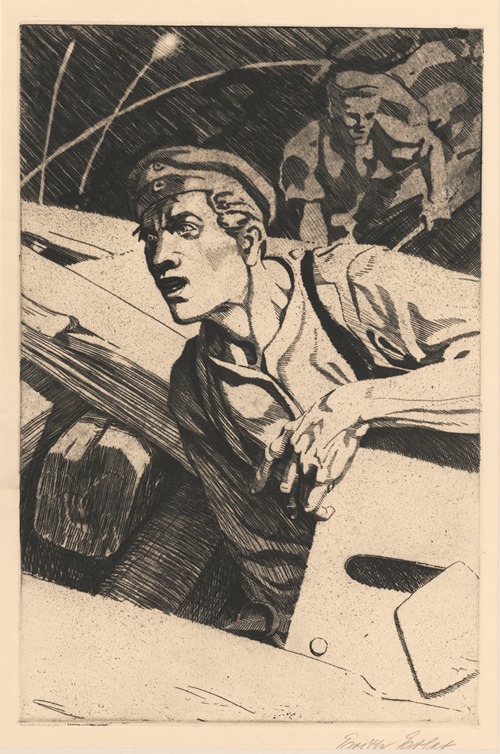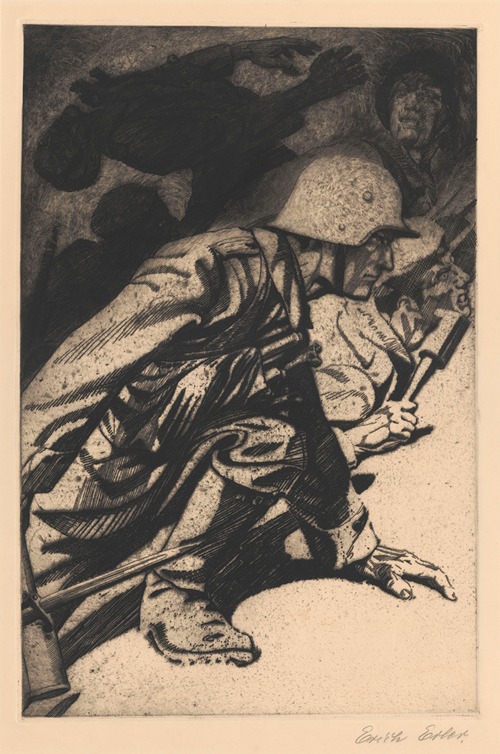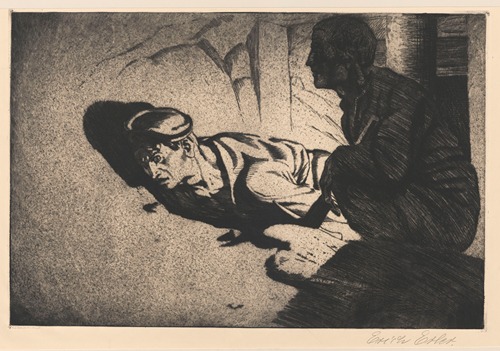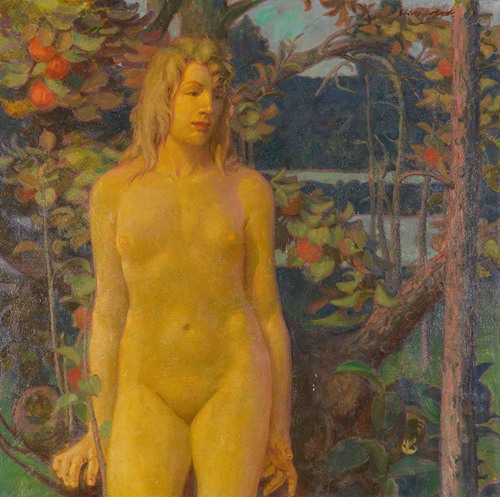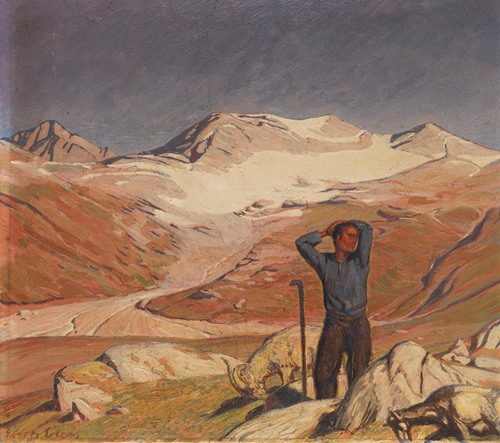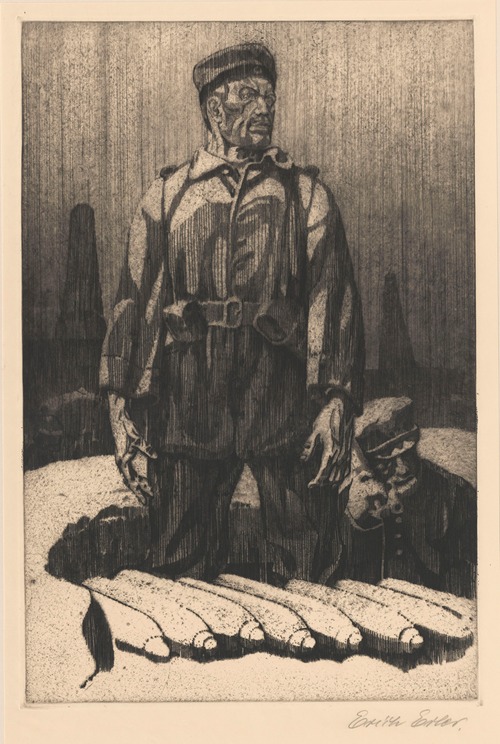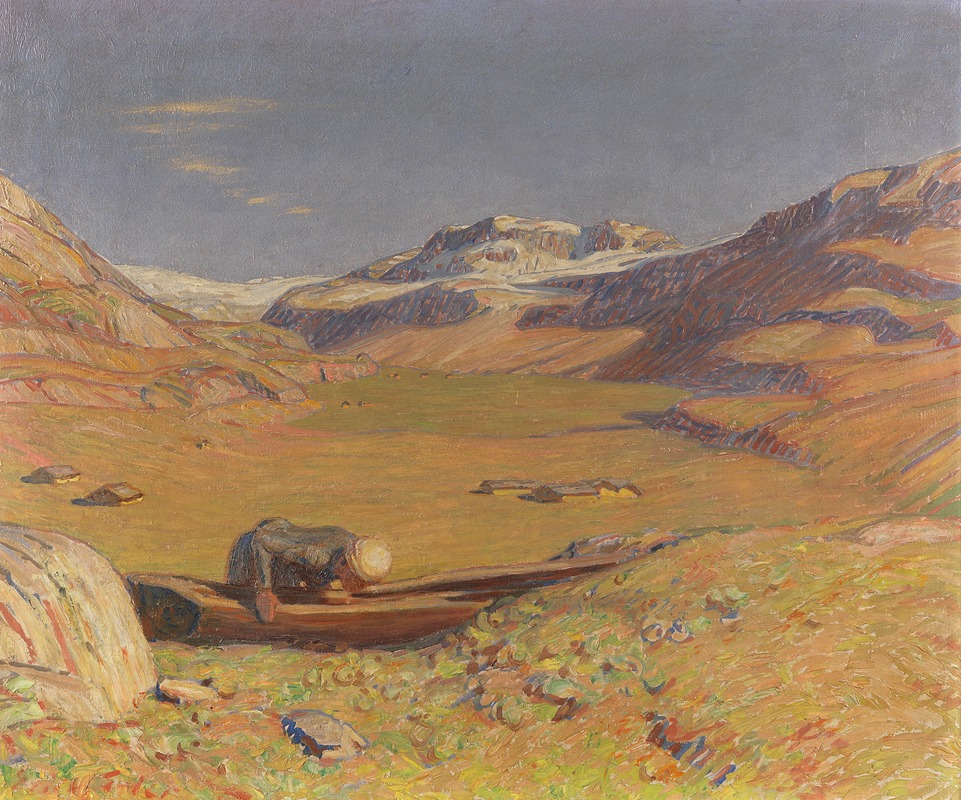
Printmaker Erich Erler, also known as Erich Erler-Samedan or, simply, Samedan, was born in on December 16, 1870, in Schlesien, Poland. Originally trained as a printer and book maker, he also worked as an editor, publishing the cycles Totentanz and Die Nibelungen. He contracted tuberculosis in the late 1890s and had to relocate to the Swiss village of Samedan to convalesce. To pass the time, he taught himself how to paint, beginning with temperas, and soon he was traveling throughout the region capturing the mountain landscapes and the local people he met along the way. Among his collectors was the Neisser family, a prominent Jewish family in Breslau whose circle of friends and patrons included Gerhart Hauptmann, Richard Strauss, and Dr. Oskar Bernard, among others.
By 1900 he had established residences in both Samedan and Munich, and joined the Die Scholle group with whom he regularly exhibited. In 1905 he built a studio in Holzhausen with his brother Fritz, turning down offers of employment as an art teacher to focus on his own works. With the onset of World War I, and despite the poor condition of his lungs, he joined the Germany Army and was sent to the frontlines. The horrors he witnessed left him unable to pursue art for a time; after completing the War and From the Front cycles, he retired with his wife to Icking and worked as a farm laborer for several years. The remaining work in his possesion was later confiscated by Nazi officials and became lost after the Second World War.
Erler died in Icking on June 19, 1946.

